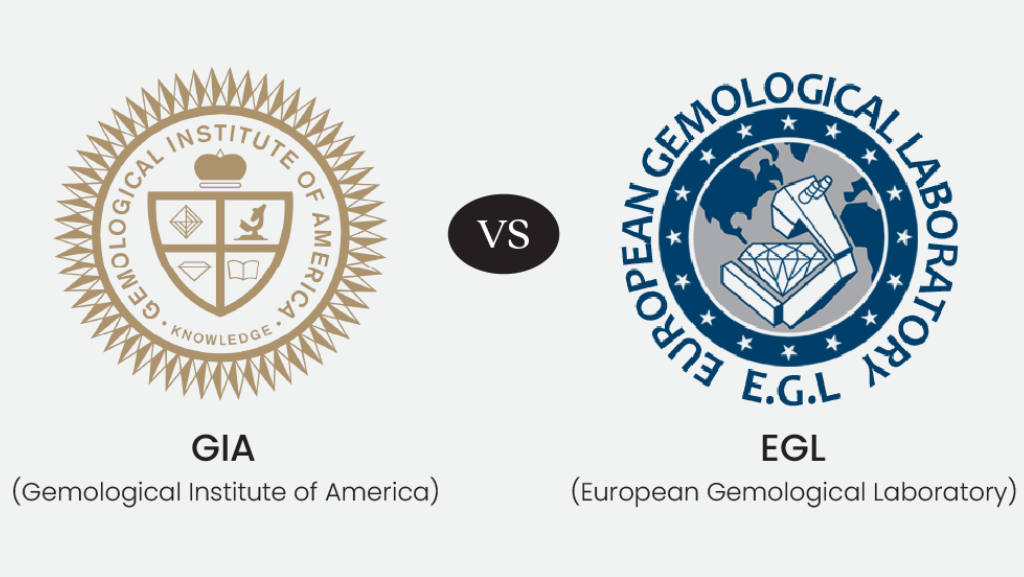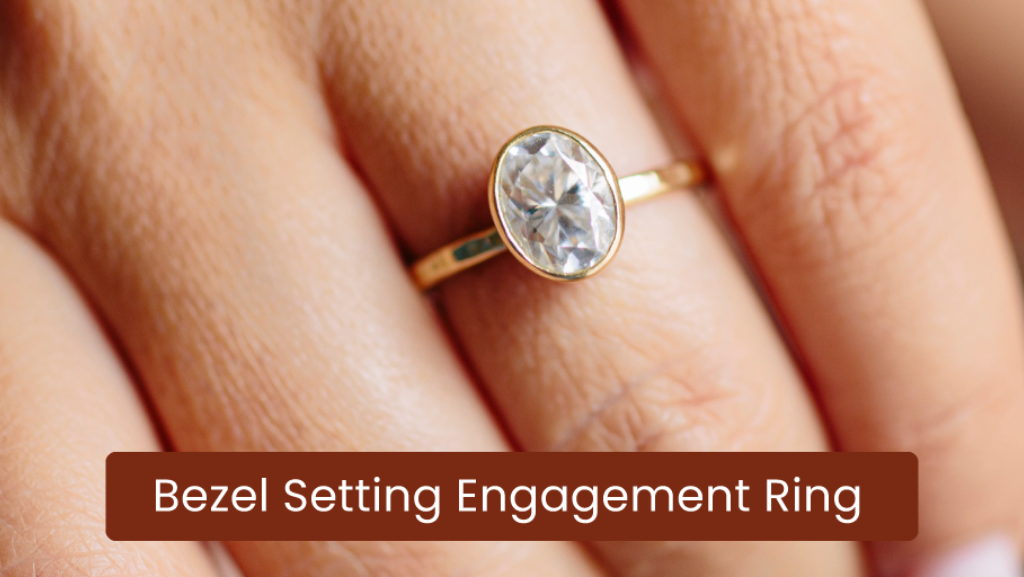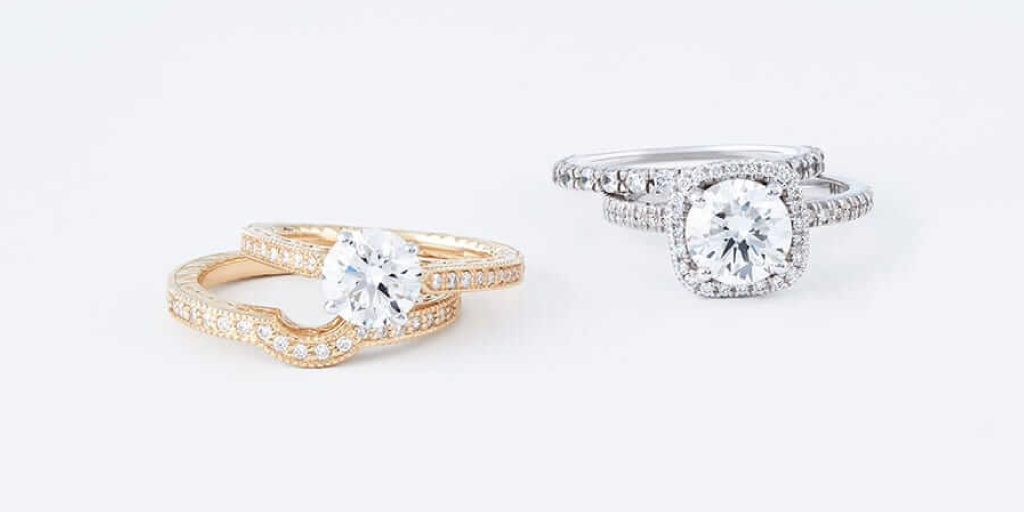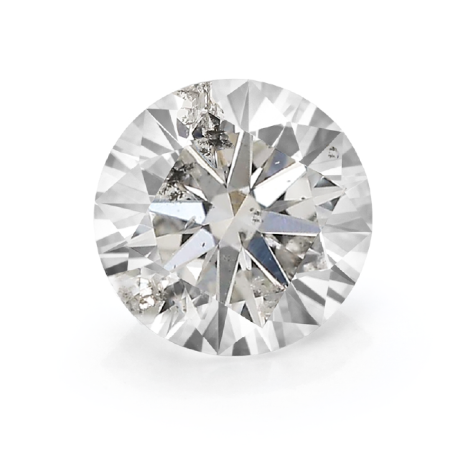IGI vs GIA: Comparison On The Basis Of Color Grading, Pricing, and Diamond Report
With this analysis, we at Loose Grown Diamonds will put an end to the ‘IGI vs GIA’ debate.
If you have ever purchased diamonds, there is a good chance you must have heard of the term ‘Gemological Laboratories’.
The questions that follow are: What are they? Their testing methods? and which of them is the best? If you know the answers to these questions and are here just to have a look at the comparison of IGI vs GIA, you can skip right ahead.
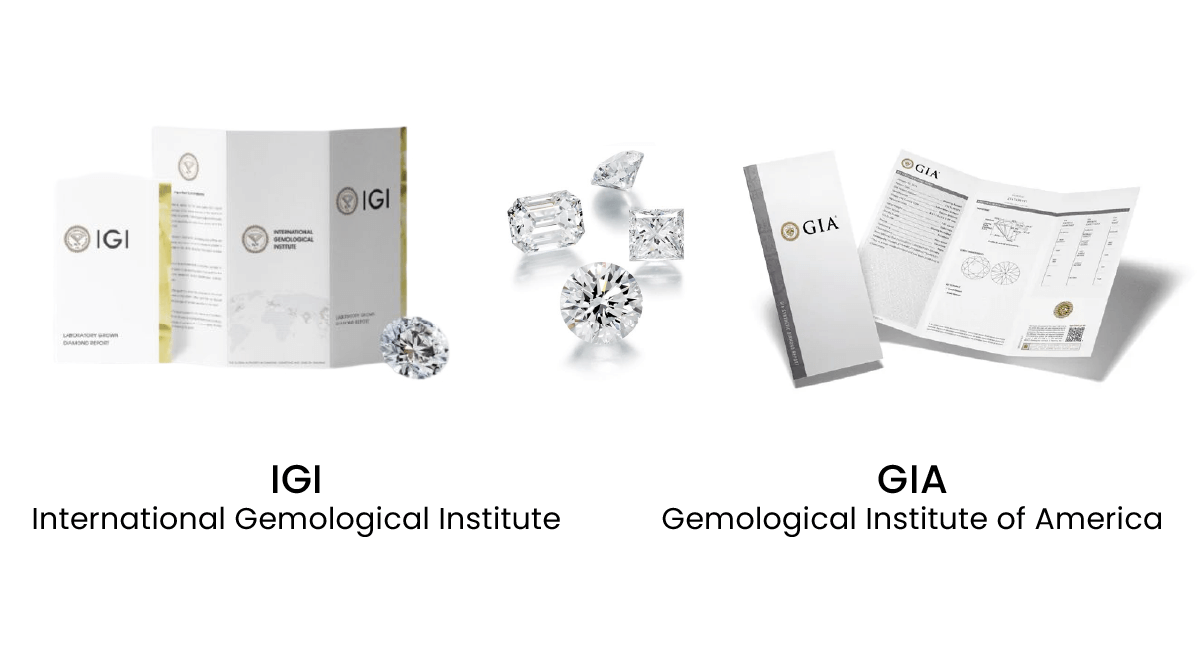
In case you haven’t heard about the many gemological laboratories, This article will walk you through the entirety of these bodies from the basics.
Gemological institutions are the organizations that are responsible for grading diamonds. To give a brief description, they are like exams for diamonds, and every other gemological laboratory is like a different exam center.
Some of which are good, and some are just unbearably bad. Why is there a lab diamond grading system, you may ask? Grading is a method used to evaluate the value of a diamond. Based on these evaluations, the seller will decide the price of the diamond.
There are multiple gemological laboratories, such as GIA ( Gemological Institute of America), EGL ( European Gemological Laboratories), IGI (International Gemological Institute), etc.
This time we will be comparing two of them: GIA vs IGI. Why not the EGL? What about that? Well, it’s because EGL is neither recommended nor respected by any reputed jeweler because of their inconsistency in grading.
Plus, in this analysis, we are focused on informing you about the comparison between IGI vs GIA.
What Is a Diamond Certification?
Diamonds are one of the most precious possessions individuals like to have. Even 100 years ago, the craze for diamonds was the same but it wasn’t the same for the diamond grading industry.
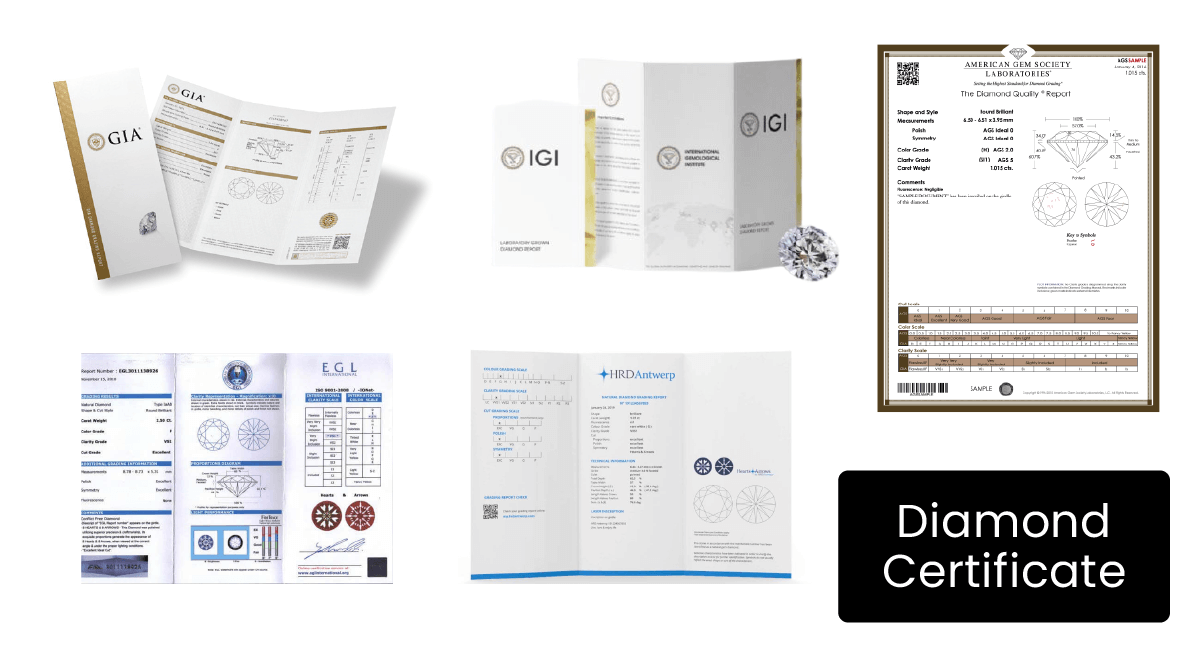
Before these laboratories existed, there was no way of knowing if the diamond you were going to pay thousands of dollars for was even real. And say if it is real, there was no way to certify if the diamond was worth the money.
Some jewelers had their own way of evaluating the value of the diamond, and some would make ridiculous claims about the diamond’s value, making stories and arguments as they went along. There was no system such as today’s diamond certification.
The customer was always at a loss; they would never get to know if what they bought was even a real diamond. There was a good chance that what they purchased at 500 dollars would only be valued at 300 dollars.
Then came the era of Gemological Laboratories. The first one to be established was today’s gold standard of diamond grading, GIA. If you are buying GIA certified diamonds, you can rest assured that the diamond certification you hold in your hands is legit.
Diamond grading is the series of rigorous tests of a particular diamond to evaluate its value. After its evaluation is complete, the diamond will have been graded according to the 4C’s. The 4C’s are the qualities a buyer should look for in a diamond.
These are clarity, color, carat weight, and cut. A diamond’s grading is based on these criteria, and what they grade in each of the C’s decides its value, or perhaps you can say price.
What are IGI and GIA?
What Is IGI Diamond Certification?
The International Gemological Institute (IGI) is among the largest independent gemological laboratories in the world. Their reports are usually common in Europe, Asia, and the United States of America.
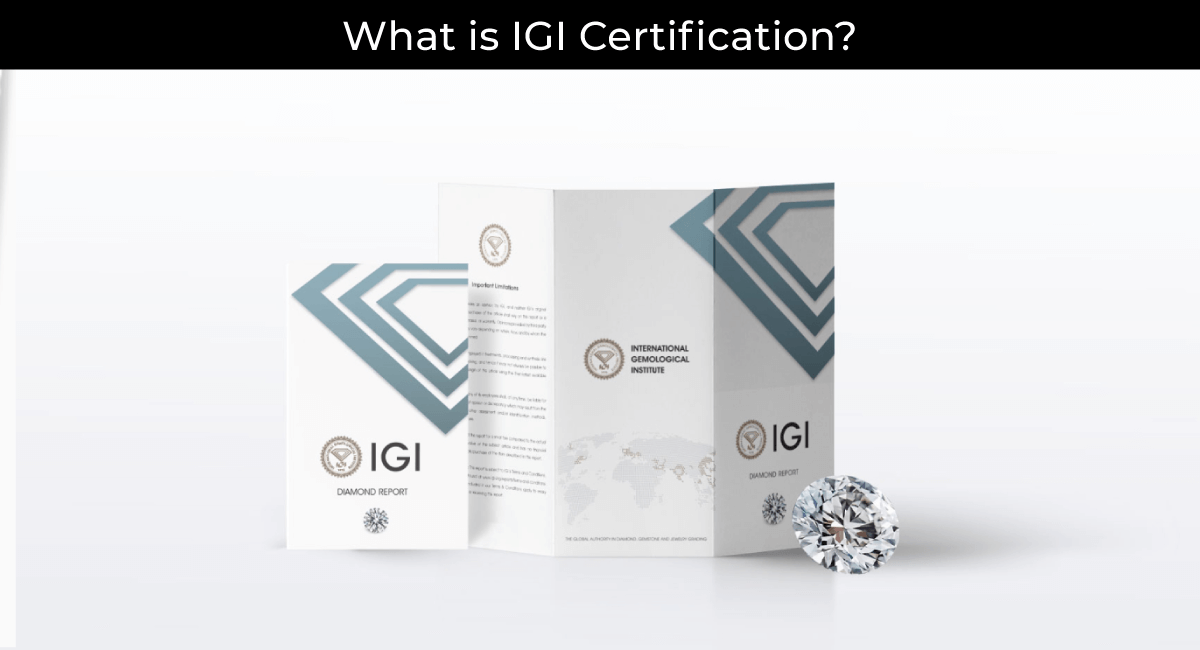
Even after the existence of prominent and renowned laboratories, they have managed to set their foot in the market. The sole reason for that is their low prices for diamond certification and their uncanny ability to certify the diamonds faster than any other laboratory.
Because of such services, they have maintained a good partnership with some of America’s most well-known jewelry retailers.
The IGI certification is not only limited to diamond grading to make it more feasible for everyday people to understand the diamond market. But it is also known for conducting quality research on diamonds to educate the diamond industry and the general public.
They have also made it easier to verify reports provided by jewelers if you buy a diamond certified by them through IGI report check services.
The format of their certification matches the structure of other laboratories. All you would be expected to do is ask the jeweler for the report number of the lab diamond and then go to the IGI certification website and fill in the report number.
This way, you would be able to verify if the report that the jeweler is showing you is correct or not.
At the top of the report, they will also mention if the diamond is lab grown or all-natural. The report will also include the diamond’s proportions, cutting style, and other information you would want to look at. All this will be found at the top of the report.
The most important characteristics that affect the diamond’s overall value are the 4C’s: color, clarity, carat weight, and cut. What we like the most about the IGI diamonds report is that they have managed to provide a dedicated section for the 4C’s.
Which not only tells you about the grade of the diamond but also educates you in a way. They have documented a scale on the report, which you can use to see where the diamond’s cut, clarity, or color grade lies, making it easier for you to understand where your diamond lies on the scale of perfection.
IGI certification gives you the complete picture of what you are getting your hands into by giving you all the things you need to know about the diamond. They also provide diamond certifications for colored diamonds.
And don’t worry; you do not need to re-learn the entire format for the colored diamonds. In this case, they also follow a similar pattern, making it easier for the consumer who is familiar with the standard diamond certification format.
Although this time, they include the image of the diamond so that you can see the shade of your colored gemstone.
What Is GIA Diamond Certification?
The GIA, which stands for Gemological Institute of America, is the gold standard of diamond certifications. It was founded in 1931 as an institute to conduct research on diamonds and distribute that knowledge to the industry and, most notably, the people who are interested in buying diamonds.
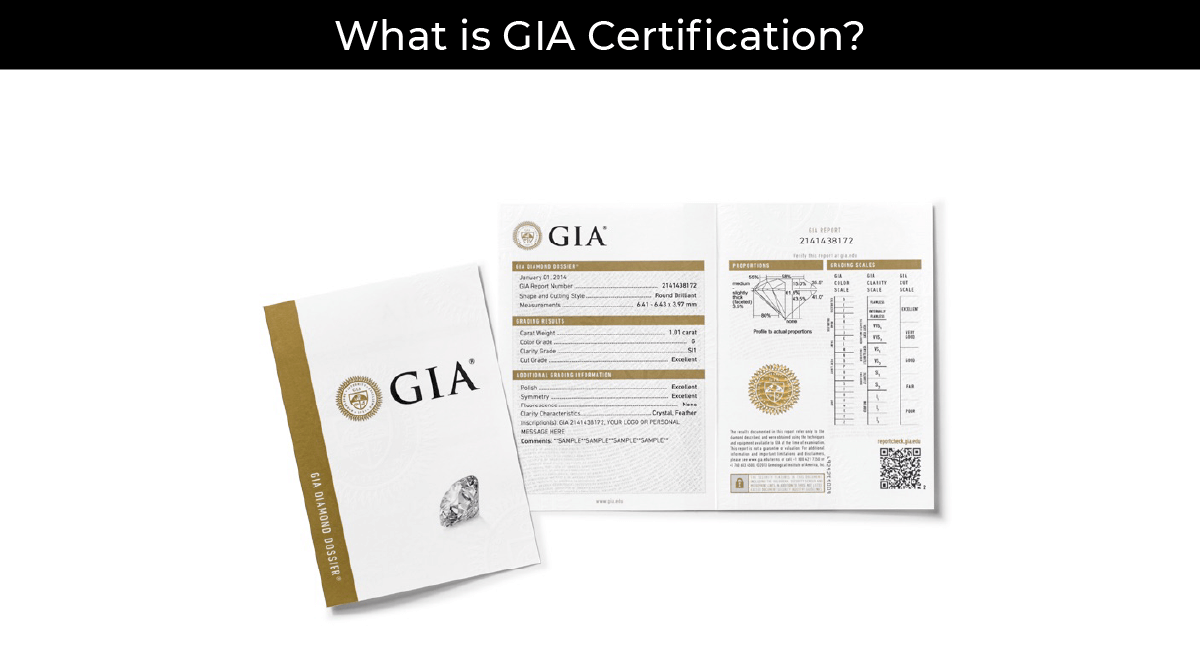
Later, they converted it into a laboratory that would not only conduct research on diamonds but also test and certify them. Besides natural diamonds, GIA also reports and certifies lab-grown diamonds and colored gemstones as well.
As we stated earlier, the GIA certification is the gold standard of diamond certifications.
Diamond grading according to or perhaps revolving around the 4C’s is universal, but, you guessed it right, the GIA developed these standards. Many of the most notable and reputed jewelers get their diamonds certified by GIA and take pride in doing so, which is 100% understandable.
After all, the GIA certification is the finest and most accurate report on a diamond. The reason for that is very well known in the diamond industry– it’s because the GIA is known to go through rigorous testing and examinations. Then they make a report on a diamond based on all the evaluations.
When the GIA reports a diamond for evaluation, they first determine whether the diamond is natural or lab-grown. They mention this information in the GIA report itself since it’s essential for you to know whether what you are buying has the qualities you were looking for.
Along with testing the diamond according to the 4C’s, they also make sure to examine whether the diamond has gone through any clarity enhancement procedures, which are known to cover up inclusions.
Inclusions are one of the most common reasons why the price of the diamond gets reduced even if it performs exceptionally well in the other grading criteria. Sellers sometimes try to hide these inclusions via some enhancement procedures.
Still, GIA makes sure that you don’t get scammed or put a dent in your pocket. They consolidate this and other information about the diamond into their report that looks much like the IGI report check.
If you have ever read an IGI report, then reading GIA’s certification will be a piece of cake for you. Like the IGI report check, you can also verify the GIA diamond certificate you are interested in.
To verify the GIA reports, all you need to do is go to their website and type in the report number at the top of the certificate, and voila! You have your confirmation.
The “grading results” section contains all about the cut, clarity, carat weight, and color information. The section below has mentioned polish, symmetry, and fluorescence information, which also includes the data about the inclusions.
Suppose you are wondering which is better, IGI vs GIA certification. In that case, there is not much of a difference, both of them are exceptionally detailed, and it won’t be a hassle for you to read them.
To get a complete picture of the flaws of the diamond, you should examine the inclusion plot, which GIA diamonds will mention at the bottom of the certificate. It would be best if you also focused on the comments that GIA certifications will document at the left of the certificate.
One more similarity that GIA certificates have with IGI diamonds is that they test and report on colored diamonds as well. While the reports might be similar regarding colored gemstones, GIA diamond certificates steal the advantage.
The sole reason for that is to mention how they determine the color of the diamond using their self-developed colored diamond scale.
The Benefits and Drawbacks of GIA
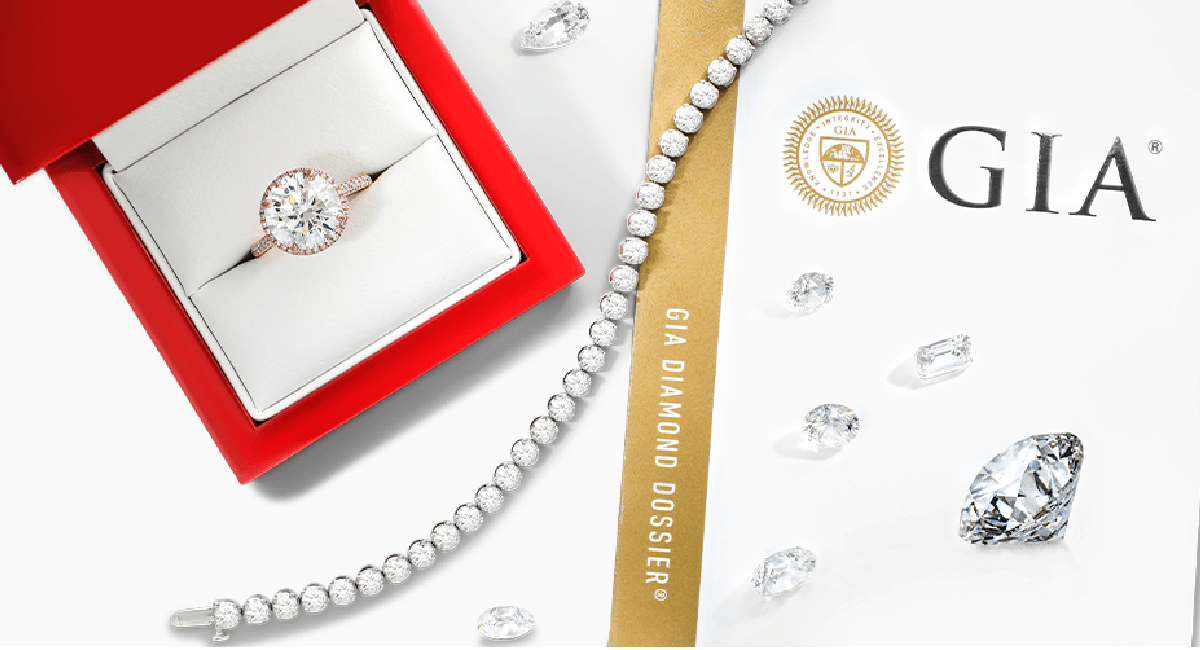
Pros of GIA
GIA diamonds are known to go through rigorous testing methods, which ensures that the quality of the GIA certificate is up to the mark. Since almost all reputed jewelers completely trust the GIA diamond certification, This means that consumers will not have to deal with possible hassles if they ever think of selling their precious stones.
Cons of GIA
GIA diamond certification is known to have a lot of cons, and most of them are related to their pricing and how much time it takes to certify a diamond. Their average price to certify a diamond is 15-20% more than that of IGI diamonds. GIA diamond certification is known to take almost a month, even for a single diamond, which means that getting a GIA diamond certification will cost you money and time. At the same time, IGI diamonds take only a few days.
Now, we are going to compare both of the above certifications(IGI vs GIA) as per their grading, price, and reports
Also Read: Egl vs Gia Diamond Certification Comparisons: A Comprehensive Valuable Guide
IGI vs GIA: How are they Different?
After all that information, the whole topic boils down to which one is better? So in this topic, we will try to evaluate GIA vs IGI and conclude for ourselves which is the better form of diamond certification.
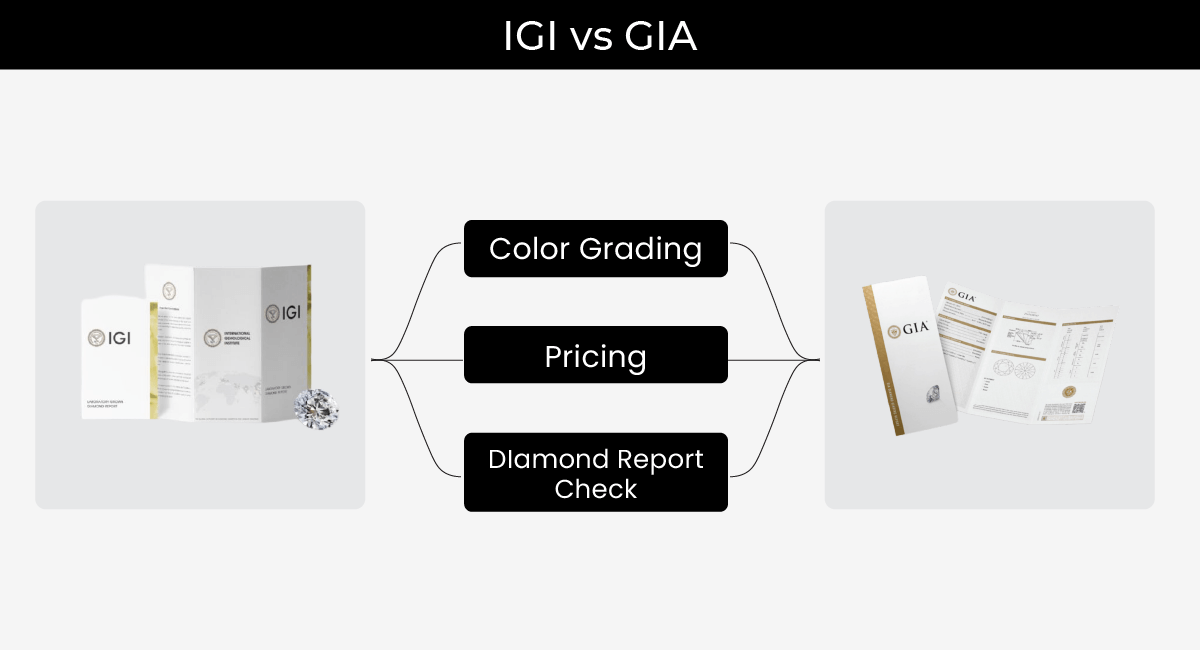
We are going to give you complete information about their pricing difference and the difference between their color grading. Along with that information, we will also tell you how IGI diamonds specialize in certifying lab grown diamonds.
IGI vs GIA: Color Grading
If we are talking about color grading, you can easily expect IGI diamonds to have a one-grade advantage over GIA diamonds. This might sound like a good thing, but it is not. This usually means that even a diamond that should not have a higher rating will have a higher rating, resulting in higher prices for diamonds of lower quality.
IGI vs GIA: Pricing
While the GIA diamonds take the lead in the quality of grading, the IGI diamond takes the lead in saving your wallet. The GIA certified diamonds are sure to have accuracy in their reports, but it comes at a greater price, literally. You can expect to pay 15-20% more if you are getting yourself a GIA certified diamond.
| Shape | Carat | Cut | Color | Clarity | Price | |
| 4.19 | Ideal | G | VS1 | $1428 $1360 | View | |
| 3.09 | Excellent | F | VS1 | $1338 $1029 | View | |
| 3.00 | Excellent | F | VS1 | $1300 $1000 | View | |
| 2.87 | Ideal | F | VS1 | $4647 $4426 | View | |
| 3.66 | Ideal | F | VVS2 | $2614 $2490 | View | |
| 2.88 | Ideal | F | VS2 | $1375 $1058 | View | |
| 3.00 | Ideal | D | VVS2 | $1806 $1720 | View | |
| 2.93 | Ideal | E | VVS1 | $3130 $2981 | View | |
| 3.90 | Ideal | E | VS1 | $1613 $1536 | View | |
| 3.05 | Ideal | E | VVS2 | $1175 $1119 | View | |
| 2.99 | Ideal | E | VS1 | $1387 $1067 | View | |
| 3.01 | Excellent | E | VS1 | $1336 $1028 | View | |
| 3.89 | Excellent | K | VVS2 | $1546 $1472 | View | |
| 4.44 | Ideal | E | VVS2 | $4700 $4476 | View | |
| 3.56 | Ideal | G | VS1 | $1287 $1226 | View | |
| 3.65 | Ideal | H | VS2 | $1010 $962 | View | |
| 3.44 | Ideal | G | VS1 | $1049 $999 | View | |
| 3.81 | Ideal | I | VS1 | $1221 $1163 | View | |
| 3.30 | Ideal | I | VS1 | $989 $942 | View | |
| 3.17 | Ideal | D | VVS1 | $3547 $3378 | View |
IGI vs GIA: Diamond Reports
At this point, we all know that GIA specializes in certifying natural-real diamonds. But what about lab-grown diamonds? Is there any laboratory that specializes in lab-grown diamonds? The answer is yes, IGI diamond reports are accurate when it comes to lab-grown diamonds. The reports are almost identical to the ones they print for the real ones, with a difference in the report’s yellow theme.
Should You Buy an IGI or GIA Diamond?
Both IGI vs GIA have reputed Diamond Certifications. But when it comes to choosing which to buy explicitly, we recommend looking at the CONS and PROS of the certification institutes.
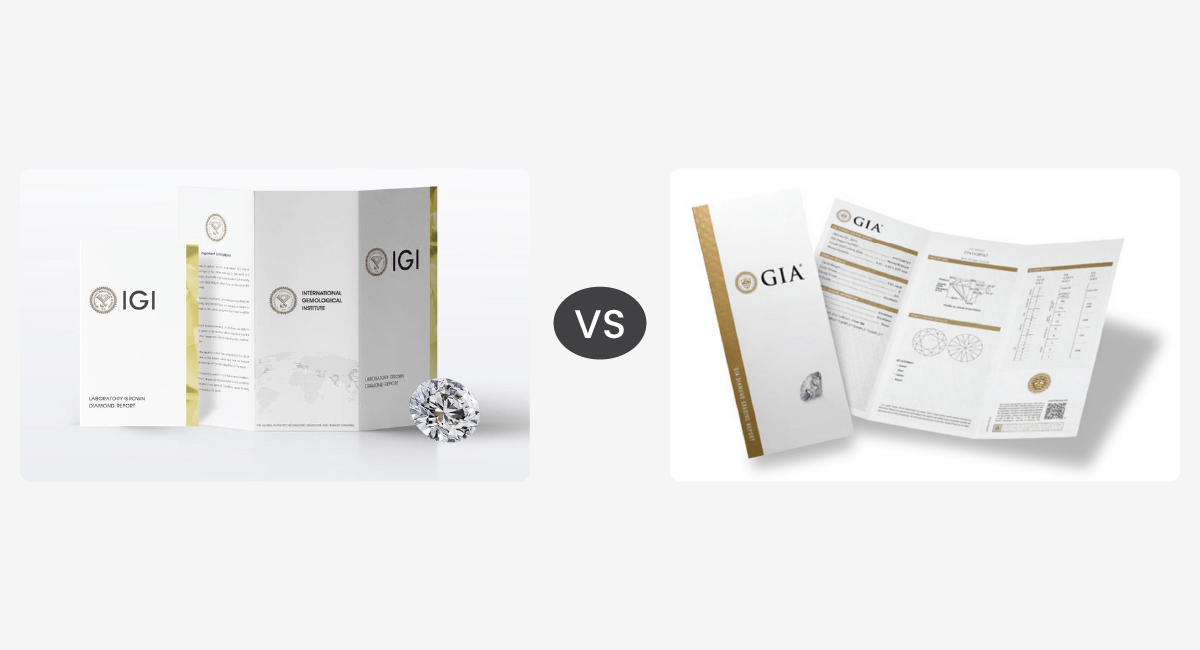
IGI diamond is comparatively cheaper, and it also has created a standard for itself in the market.
On the other hand, GIA has been one of the most reputable certification institutes. GIA has graded almost all valuable diamonds. It has a strict grading policy and accuracy, making it one of the most trusted certification institutes. It has also introduced the concept of grading the 4Cs.
When it comes to the resale value of the diamonds, it also has been noticed that GIA certified diamonds are valued more than IGI certified ones. It is also noted that both the certifications’ color grading is similar.
We recommend purchasing a stone with an unbiased credential to ensure that the diamond is of a reliable state. We believe that IGI certificates do not provide this.
Conclusion
In the above article “IGI vs GIA”, we compared 2 of the most reputed certification institutes and noticed their pros and cons.
While the grading system is similar, we recommend and emphasize buying diamonds certified with GIA.
They are typically expensive compared to IGI certifications. Still, it is worth paying the extra bucks for a higher resale value as it is highly valued in the market.
Diamond Certification FAQs
Here are some commonly asked questions regarding diamond certifications.
Is IGI as good as GIA?
IGI may be cheaper when we compare it with GIA certifications. It might also have a similar color grading system. However, GIA is a very reputable certification institute that provides unbiased and systematic grading solutions, making it highly reliable.
Which diamond lab certification is best?
We advise every buyer to only buy a gemstone with an IGI, GIA, or GCAL credential. The GIA is by far the most reputable and reliable grading organization. In addition to an IGI, GIA, or GCAL certificate, you might want to buy a diamond from a reputable seller LGD.
How much does a diamond certification cost?
The GIA certifications cost between $150 and $300.
The expense of certifying your gemstone with a GIA report is determined by various factors, including the 4Cs factors, the category of diamond credential, and other buying attributes.
Natural D-Z diamonds assistance, Natural Colored Diamonds service, laboratory-grown diamond service, pearls service, and colored stones service are the five GIA certificate charges.
In short, the GIA gemstone price depends on the carats (the weight of the gem), the type of diamond research facility offerings with add-ons, and any other tools you use to accredit the stone.
What’s the difference between diamond certification and appraisal?
A certification is a performance report published by an individual research lab that is unaffiliated with the mines. On the other hand, a diamond appraisal is a research center, jewelry store, or gemologist’s estimate of how much the diamond is worth.
Is a GIA certificate worth it?
We believe GIA certifications are highly worth it. They provide reliable certifications that are systematic and enhance the resale value of the diamond. They are one of the most trusted institutes that provide unbiased and consistent grading.
The credentialed stone usually causes the GIA gemstone price to increase compared to non-certified diamonds of the same reliability and cut.

